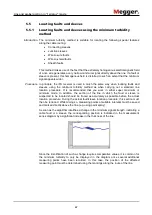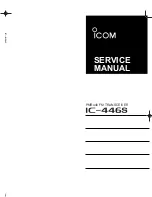
Line and probe location in “Ferrolux” mode
69
In the case of low-impedance wire-to-shield faults (<10
Ω), the signal is applied between
the cable shield and a non-faulty wire. At the end of the cable, a low-impedance
connection must be established between this non-faulty wire and the faulty wire. The
current flows along the shield and the non-faulty wire between the connection point and
the location of the fault, which is why a longitudinal twist cannot be measured in this
area. This changes as soon as you move beyond the location of the fault. From this
position, the current flows along the non-faulty and the faulty wires and a typical
longitudinal twist can be measured.
Since sleeves represent an interruption to the consistent longitudinal twist, the “Twisted-
Field” method may be particularly useful for locating longer sleeves. To perform the
location procedure, trace the section of cable in which the sleeve is suspected to be
located and watch for a short but significant deviation from the usual "level rhythm". The
level pattern directly above the sleeve depends on various factors, such as the position
of the wires within the sleeve, and does not necessarily correspond to the curve shown
below.
If the sleeve is very small, if the twist is continued inside the sleeve or if the cable is
routed deeply, this method is not suitable for reliable positioning.
Locating low-
impedance wire-to-
shield faults
Locating sleeves
Summary of Contents for digiPHONE+2
Page 2: ...2 ...
















































